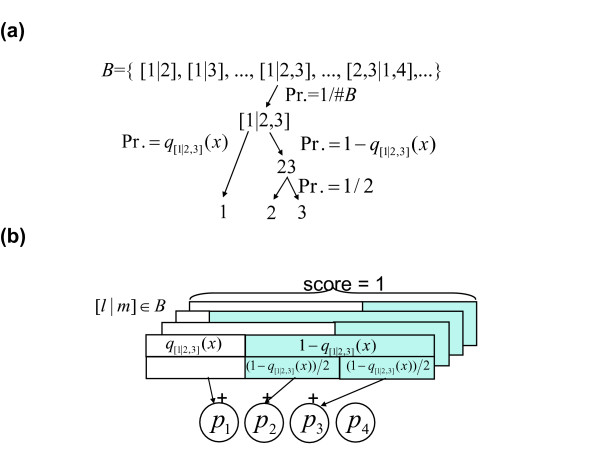Figure 4.

a) The probabilistic decision process of the multi-class predictor, for an example classification problem of four classes: 1, 2, 3 and 4. Firstly, one of the binary classifiers in a set B is selected with uniform probability 1#B, where #B is the number of binary targets in B. Secondly, class subset 1 or 2,3 is selected with probability q[1|23](x) or 1 - q[1|23](x), respectively. Thirdly, class 2 or 3 is selected with a probability of 1/2. Accordingly, one of the classes is selected with a certain probability. b) Calculation of class probability by SHS. For a binary classifier [l|m] in B and an input x which is a member of classes in l or m, we define q[l|m](x) as an estimated probability where x is a member of class(es) in l, and the complement probability 1 - q[l|m](x) where x is a member of class(es) in m. For example, q[1|23](x) and 1 - q[1|23](x) indicate the probability that x belongs to the class 1, and that x belongs to the class 2 or 3 provided that x belongs to the class 1, 2 or 3. In the SHS procedure, the probabilistic outputs by the multiple classifiers are shared and integrated by multiple classes, leading to the estimated class membership probabilities: p1,p2,p3 and p4. When l and/or m are set of multiple classes, the corresponding probabilistic outputs are shared equally to each of the members. For example, q[1|23](x) is added to p1, 1 - q[1|23](x) is shared equally and added to p2 and p3, q[1|234](x) is added to p1, 1 - q[1|234](x) is shared equally and added to p2, p3 and p4, and so on for all members of B. Consequently, we obtain an estimation of multiple class probabilities p1,p2, p3 and p4 by normalizing them so that the summation p1, p2, p3 and p4 would be one.
